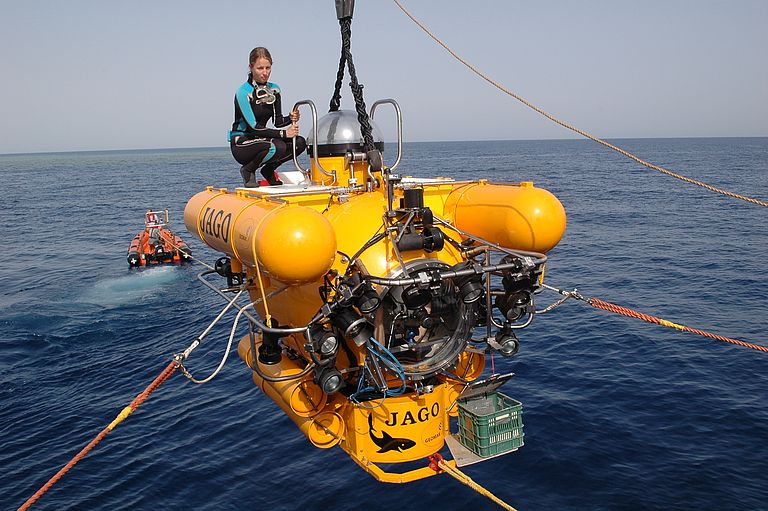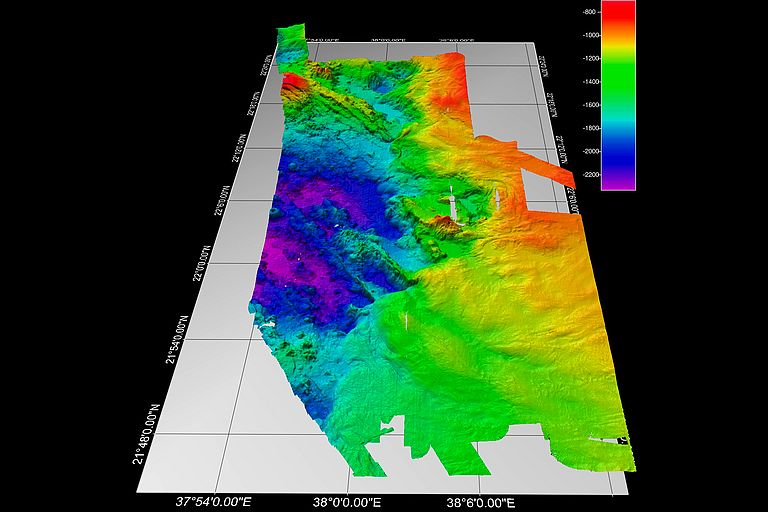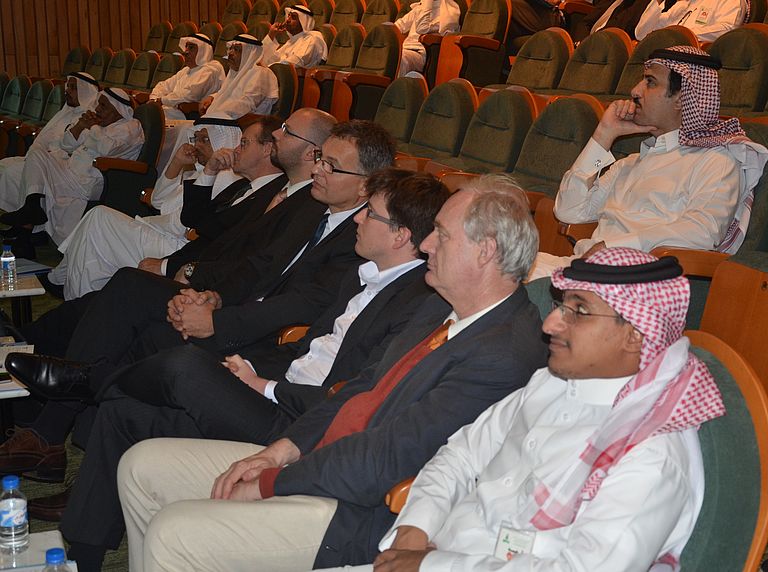Wave riders, salt glaciers and food webs
Scientific colloquium held to conclude the first phase of the Jeddah Transect Project
4 December 2012/Kiel, Jeddah. Coral reefs rich in different species, a graben which is more than 2000 m deep, rich deposits of various resources and heavy shipping traffic – these are the factors for which the Red Sea is very attractive as an object of study. For three years, geologists, marine biologists, geochemists and oceanographers from the GEOMAR Helmholtz Centre for Ocean Research Kiel have been collaborating with colleagues from King Abdulaziz University (KAU) in Jeddah, Saudi Arabia, performing interdisciplinary studies of the central Red Sea. Last week, a scientific meeting took place in Jeddah to conclude the first phase of the joint "Jeddah Transect Project". The appraisal made by all participants in the Jeddah King Faisal Conference Center was positive. In the presence of KAU vice president Prof. Adnan Zahed, the German and Saudi Arabian scientists presented summaries of the work performed so far as well as the first published scientific results of the project.
The studies cover a vast range of subjects from food webs in the coral reefs of the Red Sea coastal waters to vast salt glaciers and volcanic fields in the depth of this young ocean to monitoring of environmental parameters, current patterns and wave patterns in the coastal region off Jeddah. "For example, we have found out that salt glaciers, which are abundant at a depth of 2000 m, have a strong influence on the morphology of the Red Sea spreading zone." This discovery may also be important for the understanding of spreading mechanisms which took place in other oceanic basins in the past. A large part of the results is based on cruises using the research vessels POSEIDON and PELAGIA and 2011 and 2012 as well as numerous expeditions along the whole of the Saudi Arabian Red Sea coast during the same period of time.
The project received important stimuli by an intensive exchange of scientists, technicians and students between GEOMAR and KAU, who visited the respective partner institutions for several months for evaluation of samples and data. "We have not only advanced knowledge on the Red Sea, but established a lively cultural exchange", says GEOMAR scientist Warner Brückmann.
During the colloquium and the subsequent meeting of the Jeddah Transect Steering Committee there were discussions on plans of a continuation of the project for a second 3-year phase which will be focused on topics of applied marine science.





